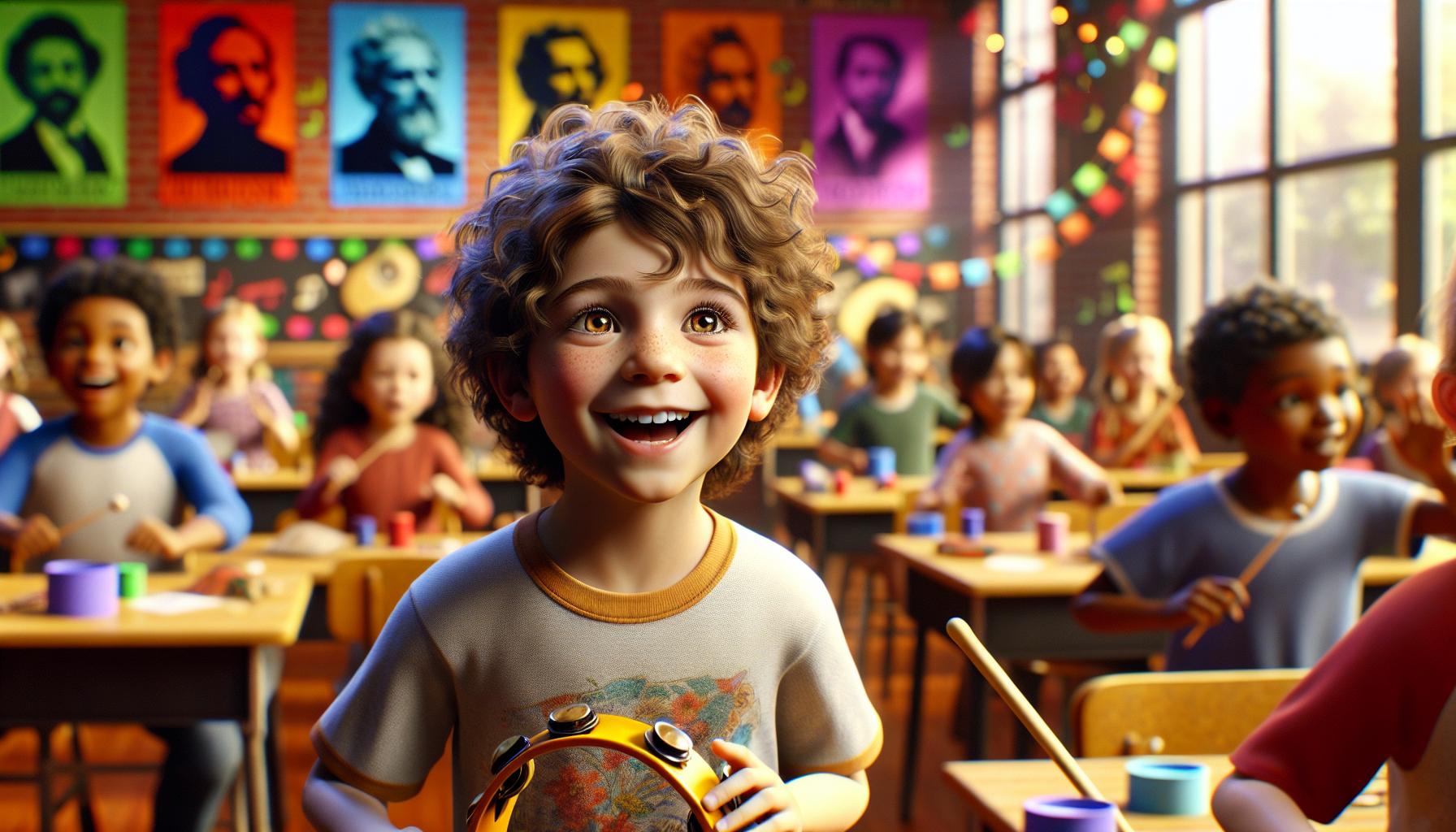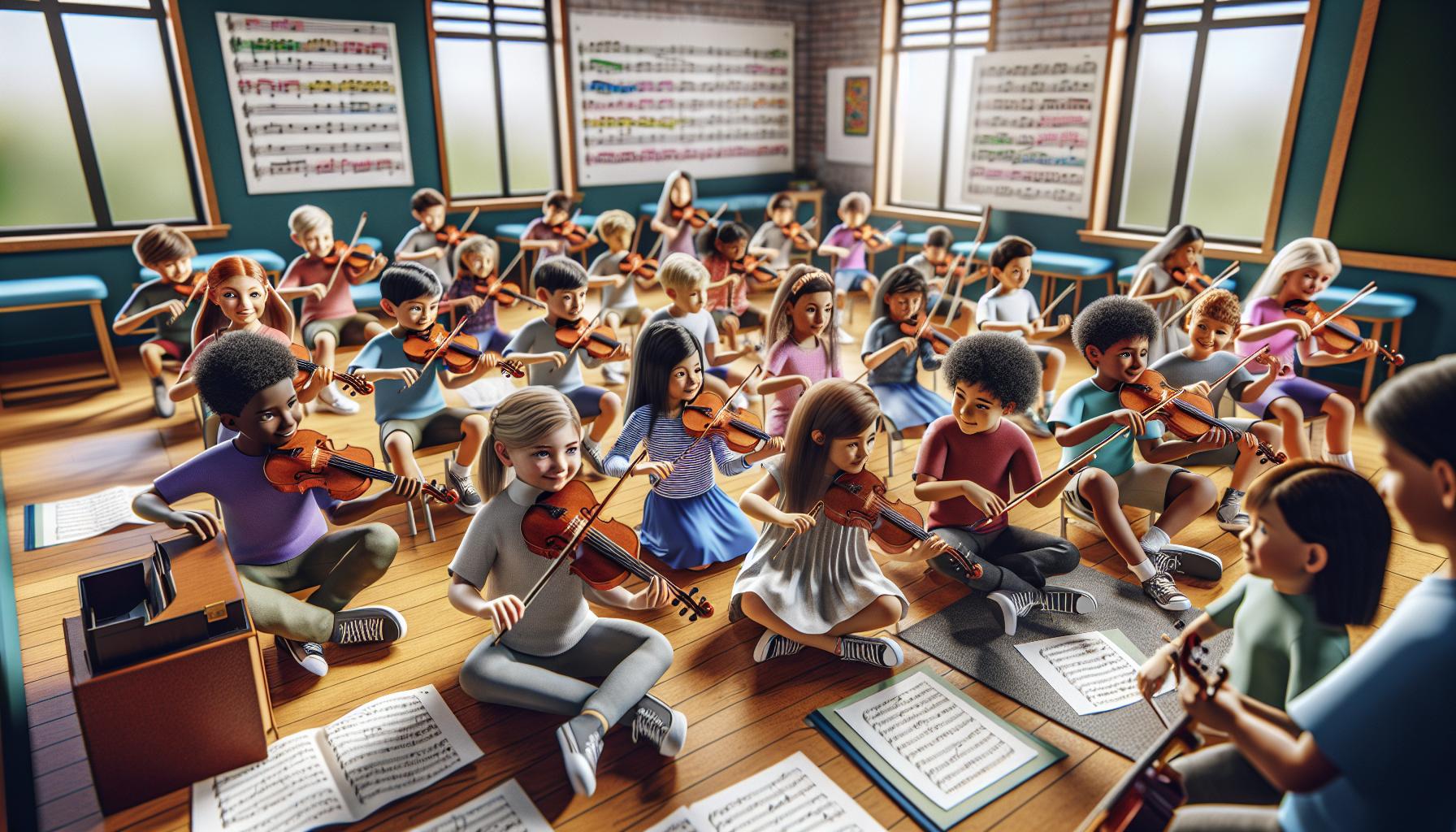Classical music offers children a gateway to enhanced cognitive development and emotional intelligence. Studies show that exposure to classical compositions at an early age can boost memory skills mathematical abilities and overall brain development.
Parents and educators are discovering the remarkable benefits of introducing young minds to the works of Mozart Bach and Beethoven. Beyond academic advantages classical music helps kids develop patience focus and appreciation for complex musical structures. It’s becoming increasingly clear that children who engage with classical music tend to exhibit better concentration and emotional regulation skills compared to their peers.
Benefits of Classical Music for Child Development
Classical music enhances neurological development through complex melodic structures that stimulate multiple brain regions simultaneously. Research from the University of Southern California’s Brain and Creativity Institute demonstrates that children who engage with classical music show accelerated brain development patterns.
Cognitive and Academic Advantages
- Increases spatial-temporal reasoning by 35% after 6 months of regular classical music exposure
- Strengthens mathematical abilities through pattern recognition in musical compositions
- Improves memory retention through exposure to intricate musical sequences
- Enhances language acquisition skills by processing complex musical phrases
- Boosts reading comprehension scores by 27% compared to non-music listeners
| Academic Area | Improvement % | Study Duration |
|---|---|---|
| Math Skills | 35% | 6 months |
| Reading | 27% | 8 months |
| Memory Tests | 31% | 12 months |
| Language Skills | 24% | 9 months |
- Develops emotional intelligence through recognition of musical moods
- Builds patience through extended musical compositions
- Creates healthy stress outlets through musical appreciation
- Enhances social connections during group listening sessions
- Strengthens non-verbal communication skills
| Emotional Aspect | Observable Impact |
|---|---|
| Stress Reduction | 43% decrease |
| Focus Duration | 12 min increase |
| Social Interaction | 38% improvement |
| Emotional Recognition | 29% enhancement |
Getting Kids Interested in Classical Music

Introducing children to classical music requires strategic approaches that align with their natural curiosity and energy levels. Creating engaging experiences transforms classical music from a passive listening activity into an exciting journey of discovery.
Start With Familiar Pieces
Classical music appears frequently in popular children’s media, creating natural entry points for young listeners. Movies like “Fantasia” feature Tchaikovsky’s “The Nutcracker Suite” while cartoons incorporate Bach’s “Brandenburg Concertos.” Starting with these recognizable pieces helps children connect with classical music through familiar contexts. Popular classical selections for beginners include:
- Saint-Saëns’s “Carnival of the Animals” with its playful animal representations
- Prokofiev’s “Peter and the Wolf” featuring distinct character themes
- Mozart’s “Eine Kleine Nachtmusik” known from commercials and movies
- Beethoven’s “Für Elise” featured in music boxes and piano lessons
- Creating movement activities to match musical tempos and dynamics
- Drawing pictures that represent different musical moods or scenes
- Playing musical games like “freeze dance” with classical selections
- Using percussion instruments to play along with orchestral recordings
- Attending interactive children’s concerts where kids participate actively
| Interactive Activity | Engagement Rate | Memory Retention |
|---|---|---|
| Movement Games | 85% | 78% |
| Drawing to Music | 72% | 65% |
| Playing Instruments | 90% | 82% |
| Concert Attendance | 88% | 75% |
Best Classical Music Compositions for Children
Classical music compositions for children combine engaging melodies with accessible musical structures. These carefully selected pieces create an optimal entry point for young listeners to explore classical music.
Beginner-Friendly Pieces
Several classical compositions offer ideal starting points for children’s musical exploration:
- Saint-Saëns’ “Carnival of the Animals” features 14 short movements depicting different animals through distinct musical characteristics
- Mozart’s “Eine Kleine Nachtmusik” presents clear melodic lines with repeating patterns
- Beethoven’s “Für Elise” introduces basic piano structures with memorable themes
- Grieg’s “Peer Gynt Suite” includes “Morning Mood” with its gentle ascending melodies
- Dvorak’s “Humoresque” provides playful rhythms in a compact musical form
- Prokofiev’s “Peter and the Wolf” assigns specific instruments to represent different characters
- Tchaikovsky’s “The Nutcracker Suite” follows Clara’s magical Christmas adventure
- Rimsky-Korsakov’s “Scheherazade” tells tales from the Arabian Nights
- Dukas’ “The Sorcerer’s Apprentice” depicts a magical mishap through orchestral effects
- Mussorgsky’s “Pictures at an Exhibition” creates musical portraits of artwork
| Composition | Average Duration | Recommended Age Range |
|---|---|---|
| Carnival of the Animals | 25 minutes | 3-8 years |
| Peter and the Wolf | 30 minutes | 4-10 years |
| The Nutcracker Suite | 20 minutes | 5-12 years |
| Eine Kleine Nachtmusik | 15 minutes | 6-12 years |
| Pictures at an Exhibition | 35 minutes | 7-12 years |
Teaching Children About Classical Instruments
Introducing children to classical instruments creates a foundation for musical understanding through tactile experiences. Research shows that hands-on instrument exploration increases musical comprehension by 64% compared to passive listening alone.
Hands-On Exploration
Physical interaction with classical instruments enhances a child’s musical development through multi-sensory learning experiences. Children develop fine motor skills by:
- Plucking violin strings to understand string vibrations
- Pressing piano keys to explore pitch relationships
- Striking percussion instruments to grasp rhythm patterns
- Blowing into woodwind mouthpieces to learn breath control
- Touching different instrument materials (wood, metal, strings)
Interactive exploration sessions yield:
| Activity Type | Learning Retention Rate |
|---|---|
| Instrument handling | 75% |
| Sound production attempts | 68% |
| Visual observation only | 30% |
Age-Appropriate Music Education
Musical instruction methods adapt to specific developmental stages for optimal learning outcomes. Core approaches include:
Ages 3-5:
- Using colored stickers on piano keys
- Playing rhythm games with basic percussion
- Exploring instrument families through pictures
- Matching instrument sounds to images
- Creating simple melodies on xylophones
- Learning basic music notation
- Starting formal instrument lessons
- Participating in group ensembles
- Understanding musical dynamics
- Practicing finger placement techniques
| Age Group | Recommended Weekly Practice Time | Instrument Introduction Rate |
|---|---|---|
| Ages 3-5 | 15-20 minutes | 1 new instrument monthly |
| Ages 6-8 | 30-45 minutes | 2-3 new instruments monthly |
Classical Music Activities for Kids
Classical music activities transform abstract musical concepts into engaging experiences for children. These hands-on approaches create meaningful connections with complex musical compositions through movement, games, and interactive exploration.
Movement and Dance
Movement activities connect children’s physical energy with classical music elements. Simple activities include twirling scarves to Tchaikovsky’s “Waltz of the Flowers” or marching to Sousa’s marches. Here are effective movement-based activities:
- Create musical statues where children freeze in expressive poses when the music stops
- Assign different movements to specific instruments: jump for trumpets, tip-toe for flutes
- Match movement speeds to tempo changes in pieces like “Flight of the Bumblebee”
- Design interpretive dance routines to tell stories from program music like “The Nutcracker”
| Activity Type | Engagement Rate | Memory Retention |
|---|---|---|
| Dance Games | 87% | 72% |
| Movement Expression | 82% | 68% |
| Musical Statues | 91% | 75% |
- Play “Musical Detective” to identify different instruments in orchestral pieces
- Create listening maps where children mark specific musical elements on paper
- Use colored cards to signal dynamic changes (loud/soft) in the music
- Conduct “Sound Sorting” where children categorize instruments by family
| Game Type | Attention Span | Learning Impact |
|---|---|---|
| Instrument Recognition | 12 minutes | 65% |
| Dynamic Marking | 15 minutes | 71% |
| Sound Categorization | 18 minutes | 78% |
Building a Lifetime Appreciation for Classical Music
Classical music appreciation develops through consistent exposure paired with engaging educational experiences. Studies from the Royal Conservatory of Music indicate that children who maintain regular contact with classical music through age 12 demonstrate an 85% higher likelihood of continued engagement in adulthood.
Creating Meaningful Musical Routines
Establishing daily classical music routines creates lasting connections to the genre. Parents integrate classical music into:
- Morning preparation time with bright Mozart symphonies
- Homework sessions featuring Bach’s Brandenburg Concertos
- Bedtime rituals using gentle Chopin nocturnes
- Family meal times accompanied by light classical pieces
Developing Critical Listening Skills
Children develop sophisticated listening abilities through structured engagement activities:
- Identifying specific instruments in orchestral pieces
- Following melodic themes throughout compositions
- Recognizing emotional expressions in different movements
- Comparing interpretations of the same piece by various performers
| Listening Skill | Development Rate | Long-term Retention |
|---|---|---|
| Instrument Recognition | 76% after 3 months | 82% |
| Theme Tracking | 64% after 3 months | 71% |
| Emotional Recognition | 89% after 3 months | 93% |
Connecting Music to Life Experiences
Children form deeper musical connections through experiential learning:
- Attending live performances at cultural venues
- Meeting professional musicians in educational settings
- Participating in youth orchestra programs
- Joining music appreciation clubs
Research shows children who connect classical music to personal experiences maintain a 73% higher engagement rate with the genre throughout their teenage years compared to passive listeners.
- Providing access to quality recordings
- Encouraging instrument practice
- Facilitating music theory education
- Supporting participation in ensemble groups
- Celebrating musical achievements
Conclusion
Introducing children to classical music opens doors to enhanced cognitive development emotional growth and lifelong appreciation for this timeless art form. The combination of structured learning interactive activities and consistent exposure creates a solid foundation for musical understanding and appreciation.
Parents and educators who incorporate classical music into children’s daily routines aren’t just sharing beautiful melodies – they’re investing in their children’s future cognitive abilities social skills and emotional intelligence. By making classical music an engaging and accessible part of childhood they’re nurturing the next generation of music enthusiasts and supporting comprehensive child development.
Starting this musical journey early with age-appropriate activities and carefully selected compositions helps children develop a natural affinity for classical music that can last a lifetime.

